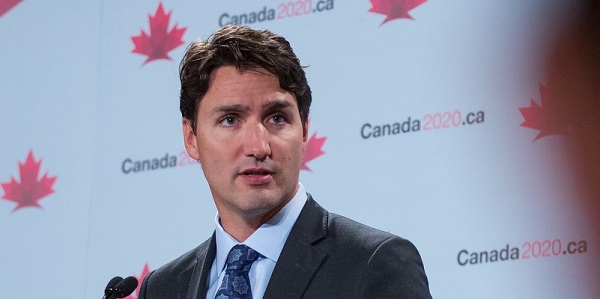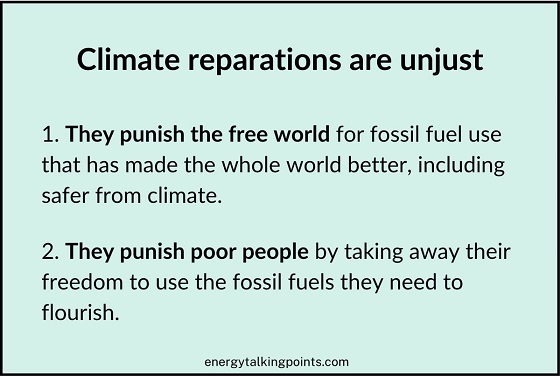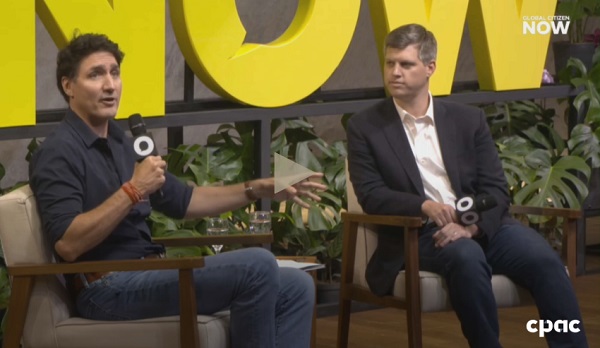Fraser Institute
Honest discussion about taxes must include bill Canadian families pay

From the Fraser Institute
By Jake Fuss
Every year at the Fraser Institute, we calculate the total tax bill—which includes income taxes, property taxes, sales taxes, fuel taxes, etc.—for the average Canadian family. This year we found the average family paid 43.0 per cent of its annual income in taxes in 2023—more than it spent on basic necessities such as food, clothing and housing combined, and significantly higher than the 33.5 per cent it paid in 1961.
Put differently, the average family’s tax bill has increased 2,705 per cent since 1961—or 180.3 per cent after adjusting for inflation.
And yet, in a recent column, Star contributing columnist Linda McQuaig said we’re “distorting the public debate over taxes” by publishing these facts while stating that the effective tax rate the average family pays has only “increased by 28 per cent since 1961.” Presumably, she arrived at her 28 per cent figure by calculating the change in the share of income going to taxes from 33.5 per cent (in 1961) to 43.0 per cent (in 2023). And yes, that’s one way to measure tax increases. But again, the inflation-adjusted dollar value—what the average family actually pays—of the tax bill has increased by 180.3 per cent. That’s not distortion, that’s explaining the increase in terms everyone can understand.
Of course, these aren’t simply academic points. Taxes, particularly at a time when families are struggling with the cost of living, have real-world effects. According to a recent poll, 74 per cent of respondents feel the average family is overtaxed, and 80 per cent believe the average family should pay 40 per cent or less of its income in total taxes.
Another important question is whether families get value for the taxes they pay. Polling shows nearly half (44 per cent) of Canadians feel they receive “poor” or “very poor” value from government services while only 16 per cent believe they receive “good” or “great” value. This should be no surprise. Health-care wait times are at record highs. Student test scores are declining. And Canada routinely fails to meet our NATO defence spending commitments.
Meanwhile, governments waste taxpayer dollars on pet projects such as a federal infrastructure bank, which, despite a budget of at least $13.2 billion, has delivered only two relatively minor projects in seven years. Or handouts to new electric vehicle (EV) owners that cost taxpayers—including Canadians unable to afford EVs—more than $587 million annually.
Can we really say governments are using our money wisely?
Unfortunately, many governments are doubling down. Municipalities such as Vancouver and Toronto raised property taxes by at least 7.5 per cent this year. Toronto city council has even floated the idea of a municipal sales tax. It’s hard to argue that you want to make life more affordable for families by leaving less money in their pockets.
And of course, the Trudeau government recently raised taxes on capital gains. But despite claims to the contrary, this tax hike won’t only affect wealthy investors. According to an analysis by economist Jack Mintz, 50 per cent of taxpayers who claim more than $250,000 of capital gains in a year earned less than $117,592 in normal annual income from 2011 to 2021. These include Canadians with modest annual incomes who own businesses, second homes or stocks, and who may choose to sell those assets once or infrequently in their lifetimes (when they retire, for example).
Finally, more tax hikes are likely on the horizon. The federal government and eight provinces are currently running budget deficits, meaning they’re not taxing enough to keep up with spending. Deficits produce debt, which will be passed onto future generations of Canadians in the form of higher taxes.
If governments across Canada want to leave more money in the pockets of Canadians, they should reduce taxes. And everyone should want an honest discussion about taxes in Canada, based on facts, not distortions.
Author:
Energy
Global fossil fuel use rising despite UN proclamations

From the Fraser Institute
By Julio Mejía and Elmira Aliakbari
Major energy transitions are slow and take centuries, not decades… the first global energy transition—from traditional biomass fuels (including wood and charcoal) to fossil fuels—started more than two centuries ago and remains incomplete. Nearly three billion people in the developing world still depend on charcoal, straw and dried dung for cooking and heating, accounting for about 7 per cent of the world’s energy supply (as of 2020).
At the Conference of the Parties (COP29) in Azerbaijan, António Guterres, the United Nations Secretary-General, last week called for a global net-zero carbon footprint by 2050, which requires a “fossil fuel phase-out” and “deep decarbonization across the entire value chain.”
Yet despite the trillions of dollars already spent globally pursuing this target—and the additional trillions projected as necessary to “end the era of fossil fuels”—the world’s dependence on fossil fuels has remained largely unchanged.
So, how realistic is a “net-zero” emissions world—which means either eliminating fossil fuel generation or offsetting carbon emissions with activities such as planting trees—by 2050?
The journey began in 1995 when the UN hosted the first COP conference in Berlin, launching a global effort to drive energy transition and decarbonization. That year, global investment in renewable energy reached US$7 billion, according to some estimates. Since then, an extraordinary amount of money and resources have been allocated to the transition away from fossil fuels.
According to the International Energy Agency, between 2015 and 2023 alone, governments and industry worldwide spent US$12.3 trillion (inflation-adjusted) on clean energy. For context, that’s over six times the value of the entire Canadian economy in 2023.
Despite this spending, between 1995 and 2023, global fossil fuel consumption increased by 62 per cent, with oil consumption rising by 38 per cent, coal by 66 per cent and natural gas by 90 per cent.
And during that same 28-year period, despite the trillions spent on energy alternatives, the share of global energy provided by fossil fuels declined by only four percentage points, from 85.6 per cent to 81.5 per cent.
This should come as no surprise. Major energy transitions are slow and take centuries, not decades. According to a recent study by renowned scholar Vaclav Smil, the first global energy transition—from traditional biomass fuels (including wood and charcoal) to fossil fuels—started more than two centuries ago and remains incomplete. Nearly three billion people in the developing world still depend on charcoal, straw and dried dung for cooking and heating, accounting for about 7 per cent of the world’s energy supply (as of 2020).
Moreover, coal only surpassed wood as the main energy source worldwide around 1900. It took more than 150 years from oil’s first commercial extraction for oil to reach 25 per cent of all fossil fuels consumed worldwide. Natural gas didn’t reach this threshold until the end of the 20th century, after 130 years of industry development.
Now, consider the current push by governments to force an energy transition via regulation and spending. In Canada, the Trudeau government has set a target to fully decarbonize electricity generation by 2035 so all electricity is derived from renewable power sources such as wind and solar. But merely replacing Canada’s existing fossil fuel-based electricity with clean energy sources within the next decade would require building the equivalent of 23 major hydro projects (like British Columbia’s Site C) or 2.3 large-scale nuclear power plants (like Ontario’s Bruce Power). The planning and construction of significant electricity generation infrastructure in Canada is a complex and time-consuming process, often plagued by delays, regulatory hurdles and substantial cost overruns.
The Site C project took around 43 years from initial feasibility studies in 1971 to securing environmental certification in 2014. Construction began on the Peace River in northern B.C. in 2015, with completion expected in 2025 at a cost of at least $16 billion. Similarly, Ontario’s Bruce Power plant took nearly two decades to complete, with billions in cost overruns. Given these immense practical, financial and regulatory challenges, achieving the government’s 2035 target is highly improbable.
As politicians gather at high-profile conferences and set ambitious targets for a swift energy transition, global reliance on fossil fuels has continued to increase. As things stand, achieving net-zero by 2050 appears neither realistic nor feasible.
Authors:
Energy
Ottawa’s proposed emission cap lacks any solid scientific or economic rationale

From the Fraser Institute
By Jock Finlayson and Elmira Aliakbari
Forcing down Canadian oil and gas emissions within a short time span (five to seven years) is sure to exact a heavy economic price, especially when Canada is projected to experience a long period of weak growth in inflation-adjusted incomes and GDP per person.
After two years of deliberations, the Trudeau government (specifically, the Environment and Climate Change Canada department) has unveiled the final version of Ottawa’s plan to slash greenhouse gas emissions (GHGs) from the oil and gas sector.
The draft regulations, which still must pass the House and Senate to become law, stipulate that oil and gas producers must reduce emissions by 35 per cent from 2019 levels by between 2030 and 2032. They also would establish a “cap and trade” regulatory regime for the sector. Under this system, each oil and gas facility is allocated a set number of allowances, with each allowance permitting a specific amount of annual carbon emissions. These allowances will decrease over time in line with the government’s emission targets.
If oil and gas producers exceed their allowances, they can purchase additional ones from other companies with allowances to spare. Alternatively, they could contribute to a “decarbonization” fund or, in certain cases, use “offset credits” to cover a small portion of their emissions. While cutting production is not required, lower oil and gas production volumes will be an indirect outcome if the cost of purchasing allowances or other compliance options becomes too high, making it more economical for companies to reduce production to stay within their emissions limits.
The oil and gas industry accounts for almost 31 per cent of Canada’s GHG emissions, while transportation and buildings contribute 22 and 13 per cent, respectively. However, the proposed cap applies exclusively to the oil and gas sector, exempting the remaining 69 per cent of the country’s GHG emissions. Targeting a single industry in this way is at odds with the policy approach recommended by economists including those who favour strong action to address climate change.
The oil and gas cap also undermines the Trudeau government’s repeated claims that carbon-pricing is the main lever policymakers are using to reduce GHG emissions. In its 2023 budget (page 71), the government said “Canada has taken a market-driven approach to emissions reduction. Our world-leading carbon pollution pricing system… is highly effective because it provides a clear economic signal to businesses and allows them the flexibility to find the most cost-effective way to lower their emissions.”
This assertion is vitiated by the expanding array of other measures Ottawa has adopted to reduce emissions—hefty incentives and subsidies, product standards, new regulations and mandates, toughened energy efficiency requirements, and (in the case of oil and gas) limits on emissions. Most of these non-market measures come with a significantly higher “marginal abatement cost”—that is, the additional cost to the economy of reducing emissions by one tonne—compared to the carbon price legislated by the Trudeau government.
And there are other serious problems with the proposed oil and gas emissions gap. For one, emissions have the same impact on the climate regardless of the source; there’s no compelling reason to target a single sector. As a group of Canadian economists wrote back in 2023, climate policies targeting specific industries (or regions) are likely to reduce emissions at a much higher overall cost per tonne of avoided emissions.
Second, forcing down Canadian oil and gas emissions within a short time span (five to seven years) is sure to exact a heavy economic price, especially when Canada is projected to experience a long period of weak growth in inflation-adjusted incomes and GDP per person, according to the OECD and other forecasting agencies. The cap stacks an extra regulatory cost on top of the existing carbon price charged to oil and gas producers. The cap also promises to foster complicated interactions with provincial regulatory and carbon-pricing regimes that apply to the oil and gas sector, notably Alberta’s industrial carbon-pricing system.
The Conference Board of Canada think-tank, the consulting firm Deloitte, and a study published by our organization (the Fraser Institute) have estimated the aggregate cost of the federal government’s emissions cap. All these projections reasonably assume that Canadian oil and gas producers will scale back production to meet the cap. Such production cuts will translate into many tens of billions of lost economic output, fewer high-paying jobs across the energy supply chain and in the broader Canadian economy, and a significant drop in government revenues.
Finally, it’s striking that the Trudeau government’s oil and gas emissions cap takes direct aim at what ranks as Canada’s number one export industry, which provides up to one-quarter of the country’s total exports. We can’t think of another advanced economy that has taken such a punitive stance toward its leading export sector.
In short, the Trudeau government’s proposed cap on GHG emissions from the oil and gas industry lacks any solid scientific, economic or policy rationale. And it will add yet more costs and complexity to Canada’s already shambolic, high-cost and ever-growing suite of climate policies. The cap should be scrapped, forthwith.
Authors:
-

 Brownstone Institute10 hours ago
Brownstone Institute10 hours agoThe Most Devastating Report So Far
-

 Economy22 hours ago
Economy22 hours agoCOP 29 leaders demand over a $1 trillion a year in climate reparations from ‘wealthy’ nations. They don’t deserve a nickel.
-

 Censorship Industrial Complex14 hours ago
Censorship Industrial Complex14 hours agoAnother Mass Grave?
-

 Alberta13 hours ago
Alberta13 hours agoMAiD In Alberta: Province surveying Albertans about assisted suicide policies
-

 Alberta20 hours ago
Alberta20 hours agoOn gender, Alberta is following the science
-

 Energy21 hours ago
Energy21 hours agoOttawa’s proposed emission cap lacks any solid scientific or economic rationale
-

 Bruce Dowbiggin9 hours ago
Bruce Dowbiggin9 hours agoCHL Vs NCAA: Finally Some Sanity For Hockey Families
-

 Brownstone Institute2 days ago
Brownstone Institute2 days agoFirst Amendment Blues








